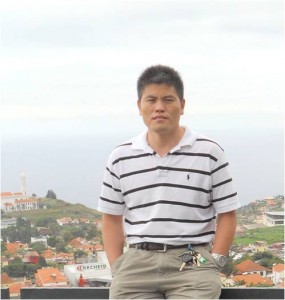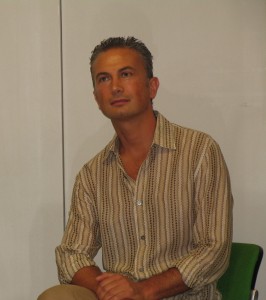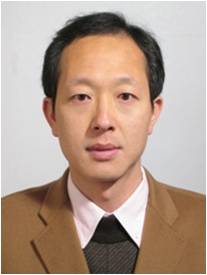 Prof. Xiangyang Shi graduated with a B.Sc. in chemistry from Henan Normal University, a M.E. in applied chemistry from Beijing Institute of Technology, and Ph.D. in organic chemistry from the Institute of Photographic Chemistry, Chinese Academy of Sciences in 1992, 1995, and 1998, respectively. He worked as a Postdoctoral Fellow at Tsinghua University (1998-2000) in Beijing and Max-Planck Institute of Colloids and Interfaces (2000-2001) in Potsdam, Germany. He then moved to California State University, Los Angeles (2001-2002) as a visiting scholar. From 2002-2008, he worked as a Research Fellow, Research Associate II, Research Investigator, and Research Assistant Professor at the University of Michigan, Ann Arbor. He then became a professor of special appointment both in Donghua University and in Shanghai Institutions of High Learning (Eastern Scholar) in 2008. Since 2010, Prof. Shi has also been appointed as an Invited Chair in Nanotechnology at the University of Madeira, Funchal, Portugal. Prof. Shi has authored or coauthored more than 145 referred journal articles and 118 technical conference abstracts or proceeding papers, along with 6 invited book chapters and 9 approved patents. His current research interests include dendrimer chemistry and related nanomedicinal applications, in particular cancer diagnosis and therapy. He is also developing nanofiber-based technology with an emphasis on the synthesis and fabrication of bioscaffolding materials in tissue engineering and pharmaceutical applications and the immobilization of reactive nanoparticles within nanofibrous mats for environmental applications.
Prof. Xiangyang Shi graduated with a B.Sc. in chemistry from Henan Normal University, a M.E. in applied chemistry from Beijing Institute of Technology, and Ph.D. in organic chemistry from the Institute of Photographic Chemistry, Chinese Academy of Sciences in 1992, 1995, and 1998, respectively. He worked as a Postdoctoral Fellow at Tsinghua University (1998-2000) in Beijing and Max-Planck Institute of Colloids and Interfaces (2000-2001) in Potsdam, Germany. He then moved to California State University, Los Angeles (2001-2002) as a visiting scholar. From 2002-2008, he worked as a Research Fellow, Research Associate II, Research Investigator, and Research Assistant Professor at the University of Michigan, Ann Arbor. He then became a professor of special appointment both in Donghua University and in Shanghai Institutions of High Learning (Eastern Scholar) in 2008. Since 2010, Prof. Shi has also been appointed as an Invited Chair in Nanotechnology at the University of Madeira, Funchal, Portugal. Prof. Shi has authored or coauthored more than 145 referred journal articles and 118 technical conference abstracts or proceeding papers, along with 6 invited book chapters and 9 approved patents. His current research interests include dendrimer chemistry and related nanomedicinal applications, in particular cancer diagnosis and therapy. He is also developing nanofiber-based technology with an emphasis on the synthesis and fabrication of bioscaffolding materials in tissue engineering and pharmaceutical applications and the immobilization of reactive nanoparticles within nanofibrous mats for environmental applications.
Research website: http://www3.dhu.edu.cn/rschu/professor/shixiangyang.htm
What was your inspiration in becoming a chemist?
I started to love chemistry when I was a high-school student, because chemistry course learning was always able to fullfil my curiosity. With the years, I have been enjoying very much doing research in different disciplines of chemistry, in particular in polymer chemistry, from which I am able to lead a group of students to creat new polymer-based functional materials for various biomedical and environmental applications.
What was the motivation to write your Polymer Chemistry article? (DOI: 10.1039/C2PY20993D)
With the continuation of my research work in the area of dendrimer-based nanomedicine at the Michigan Nanotechnology Institute for Medicine and Biological Sciences (headed by Prof. James R. Baker, Jr.), University of Michigan, Ann Arbor, our group has been fully involved in the creation of various dendrimer-based nanoparticles for biomedical imaging applications since 2008. In most of our earlier research, generation 5 (G5) poly(amidoamine) dendrimers were used as either templates or stabilizers to create dendrimer-entrapped gold nanoparticles or dendrimer-stabilized gold nanoparticles. The high cost of high generation dendrimers (generation > 4) really limits the practical applications of the formed dendrimer-based organic/inorganic hybrid nanoparticles.
Our group has worked on seeking a new way to create stable dendrimer/gold nanocomposite particles using low generation dendrimers. Fortunately, via a facile hydrothermal approach we are able to generate G2 dendrimer-stablized gold nanoparticles that can be further acetylated to neutralize the positive surface potential of the particles for in vivo computed tomography imaging applications.
Why did you choose Polymer Chemistry to publish your work?
Polymer Chemistry has been recognized as one of the leading journals in the area of polymer science with a high initial impact factor. We therefore thought that it would be an ideal forum for publication of our research.
In which upcoming conferences may our readers meet you?
At the 245th ACS National Meeting & Exposition, New Orleans, LA, April 7-11, 2013 (http://acs.org/meetings), at the 7th International Coference on Materials for Advanced Technilogies in Singapore, 30 June-5 July, 2013 (http://www.mrs.org.sg/icmat2013/public.asp?page=home.asp), and also at The 2013 International Conference on Advances in Nano Research, COEX, Seoul, South Korea, August 25-28, 2013 (http://anbre.cti3.com/anbre13.htm).
How do you spend your spare times?
In my spare times, my favorite activity is to travel with my family (wife, and two lovely sons, one 10 years old, and the other 8 years old).
Which profession would you choose if you were not a scientist?
I would be an accountant.
Cyrille Boyer is a guest web-writer for Polymer Chemistry. He is currently a Senior Lecturer and an ARC-Future Fellow at the Australian Centre for NanoMedicine (School of Chemical Engineering, University of New South Wales (Australia)).



















